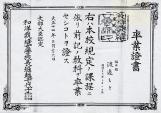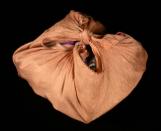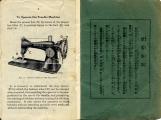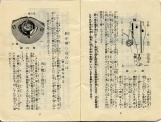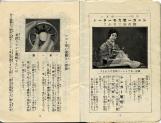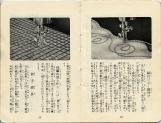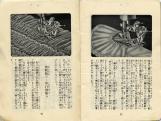1
Yosai (Western Sewing) / by Midge Ayukawa3
The coming Powell Street Festival display [in Vancouver, August 1996] by the Japanese Canadian National Museum and Archives Society has aroused an interest in Yosai (Western Sewing). Many of us "older" Nikkei women who recall some of the vibrant life around pre-war Powell Street in Vancouver are well aware of the vital part that Yosai played in that era. There were a number of sewing schools that taught pattern drafting, fitting and sewing, as well as tailoring. One name especially comes to mind - the Kita School. It was located on the corner or Jackson and Cordova Streets, across from Powell Grounds (Oppenheimer Park).4
Spools of silk thread brought from Japan by Maki Kudo around 1900, wrapped in a silk furoshiki cloth1900
Vancouver, BC
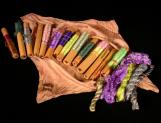
5
Where did Yosai originate? These schools in Vancouver existed even in the 1910s. Since the teachers had come from Japan, it can be concluded that the method had been learned in Japan. Thus, some enterprising person had likely studied it in Europe or North America and adapted it in Japan. I recently consulted a friend who had been born in Kobe in the late 1920s to see if she could provide some information. Her mother was Japanese, and her father German. In 1900 her father had introduced the first Singer sewing machine (she believed it was a New York company) for sale in Japan. Her mother had been his demonstrator and had also studied Yosai during that period. In the pre-war period in Japan, my friend said Yosai and flower arrangement were considered necessary marriage preparations for young women.6
Sewing school diploma of Motoko Sakamoto (nee Watanabe), March 26, 1925.26 March 1925
Fukui Prefecture, Japan
